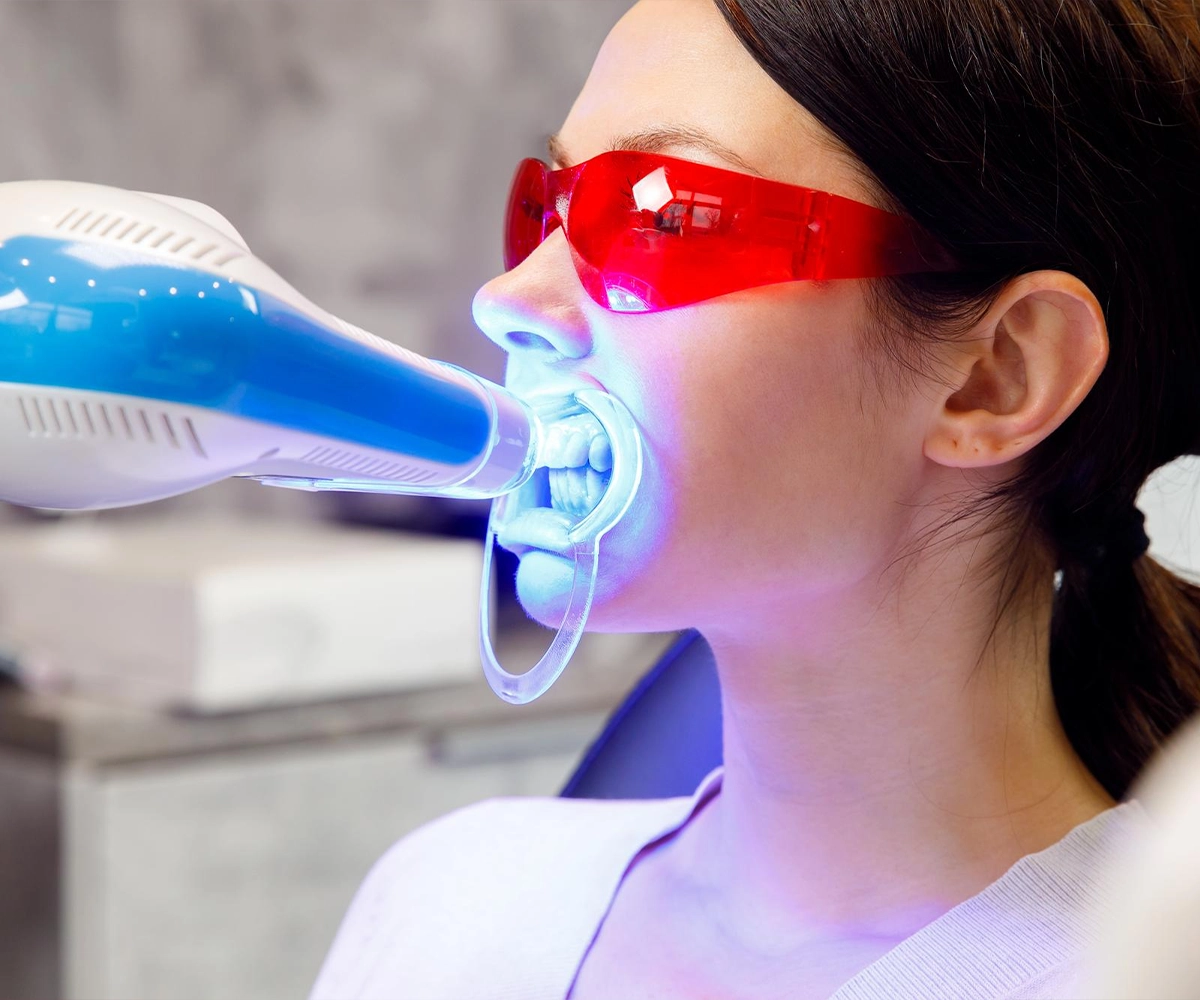Do you want to have whiter and brighter teeth? Teeth whitening is a very popular procedure that can help you achieve this result. However, before you decide to try any at-home whitening products or go to a clinic for a professional treatment, it is important to understand how this process works and what options you have available.
In this blog post, we will explain everything you need to know about the teeth whitening procedure, including the options you have, the benefits, and the post-treatment care.
What is Teeth Whitening?
Teeth whitening is a process aimed at removing stains and yellowing from the surface of the teeth, making them appear whiter and brighter. This can be done using whitening agents such as hydrogen peroxide, or with more advanced techniques like laser and special light treatments to activate these substances.
Stains and changes in tooth color can occur for several reasons, such as the consumption of foods and beverages that leave stains (coffee, tea, red wine), tobacco use, natural aging of teeth, or lack of proper oral hygiene.
Types of Teeth Whitening Procedures
There are several ways to whiten teeth, and they can be divided into two main categories: treatments that you can do at home and those performed in a clinic by dentists.
1. Teeth Whitening at Home
-
Whitening Toothpastes: One of the simplest and most affordable options is using whitening toothpastes. These toothpastes are rich in ingredients like sodium bicarbonate and hydrogen peroxide that help remove surface stains. However, these pastes may only be effective for small stains and may not change the natural color of very yellow teeth.
- Whitening Strips and Trays: This is an option that you can do yourself at home and is more powerful than regular toothpastes. Whitening strips and trays contain hydrogen peroxide or carbamide peroxide in higher concentrations and are applied to the teeth for several minutes to hours. Results can be seen after a few days of use
- Whitening Gel: This gel is applied to the teeth and is often used in combination with custom trays for an immediate and more lasting effect.
2. Teeth Whitening in the Clinic (Professional)
For those who want quick and effective results, in-office teeth whitening is the best option. Professional procedures are more powerful and are typically used to treat deeper stains and the natural color of teeth that is harder to whiten with at-home methods.
- Laser Whitening: This is one of the most advanced treatments and visible results can be achieved after just one session. The laser is used to activate the hydrogen peroxide applied to the teeth, helping them whiten more quickly and effectively.
- Light Whitening: Another method used in clinics is the use of powerful light to activate the whitening substances applied to the teeth. This process is fast and can provide extraordinary results within a single session.
- Whitening with Gel and Trays: This treatment involves using a whitening gel applied to the teeth, often with the use of special trays that ensure the whitening substance stays in close contact with the teeth for an extended period. This treatment may require several visits to the clinic to achieve the desired results.
Benefits of Teeth Whitening
- Increased Self-Confidence: White and healthy teeth can improve self-esteem and give you a greater sense of confidence. A beautiful smile is one of the most desired traits in social and professional life.
- Correction of Stains and Discolorations: Teeth whitening can help eliminate stains from coffee, tea, red wine, tobacco, and other foods that can cause discoloration.
- Improvement in Oral Hygiene: Such a procedure can encourage greater interest in oral hygiene and help you take better care of your teeth, reducing the likelihood of developing dental problems such as cavities and gingivitis.
Post-Whitening Care
After a whitening treatment, it is important to take proper care of your teeth to maintain the results:
Regular Dentist Check-ups: Regular visits to the dentist are important to maintain the health of your teeth and to ensure that the whitening treatment has achieved the desired results.
Avoid Staining Foods and Beverages: After whitening, it is advisable to avoid coffee, tea, red wine, candies, and tobacco for a few days to prevent stains from reappearing.
Regular Oral Hygiene: Brush your teeth at least twice a day and use dental floss to keep your teeth clean and healthy.

